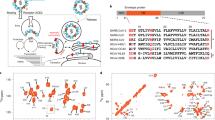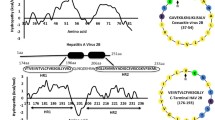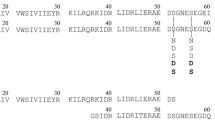Abstract
Arbidol is a potent broad-spectrum antiviral molecule for the treatment and prophylaxis of many viral infections. Viruses that can be inhibited by arbidol include enveloped and non-enveloped viruses, RNA and DNA viruses, as well as pH-independent and pH-dependent ones. These differences in viral types highlight the broad spectrum of Arb antiviral activity and, therefore, it must affect a common viral critical step. Arbidol incorporates rapidly into biological membranes, and some of its antiviral effects might be related to its capacity to interact with and locate into the membrane. However, no information is available of the molecular basis of its antiviral mechanism/s. We have aimed to locate the protonated (Arp) and unprotonated (Arb) forms of arbidol in a model membrane system. Both Arb and Arp locate in between the hydrocarbon acyl chains of the phospholipids but its specific location and molecular interactions differ from each other. Whereas both Arb and Arp average location in the membrane palisade is a similar one, Arb tends to be perpendicular to the membrane surface, whereas Arp tends to be parallel to it. Furthermore, Arp, in contrast to Arb, seems to interact stronger with POPG than with POPC, implying the existence of a specific interaction between Arp, the protonated from, with negatively charged phospholipids. This data would suggest that the active molecule of arbidol in the membrane is the protonated one, i.e., the positively charged molecule. The broad antiviral activity of arbidol would be defined by the perturbation it exerts on membrane structure and therefore membrane functioning.
Graphical Abstract






Similar content being viewed by others

Abbreviations
- Chol:
-
Cholesterol
- Arb:
-
Arbidol (un-protonated form)
- Arp:
-
Arbidol (protonated form)
- POPC:
-
1-Palmitoyl-2-oleoyl-sn-glycero-3-phosphocholine
- POPG:
-
1-Palmitoyl-2-oleoyl-sn-glycero-3-phospho-(1′-rac-glycerol)
References
Anézo C, de Vries AH, Höltje H-D, Tieleman DP, Marrink S-J (2003) Methodological issues in lipid bilayers simulations. J Phys Chem B 107:9424–9433
Blaising J, Polyak SJ, Pecheur EI (2014) Arbidol as a broad-spectrum antiviral: an update. Antiviral Res 107:84–94
Bockmann RA, Hac A, Heimburg T, Grubmuller H (2003) Effect of sodium chloride on a lipid bilayer. Biophys J 85:1647–1655
Boriskin YS, Leneva IA, Pecheur EI, Polyak SJ (2008) Arbidol: a broad-spectrum antiviral compound that blocks viral fusion. Curr Med Chem 15:997–1005
Brooks MJ, Burtseva EI, Ellery PJ, Marsh GA, Lew AM, Slepushkin AN, Crowe SM, Tannock GA (2012) Antiviral activity of arbidol, a broad-spectrum drug for use against respiratory viruses, varies according to test conditions. J Med Virol 84:170–181
Delogu I, Pastorino B, Baronti C, Nougairede A, Bonnet E, de Lamballerie X (2011) In vitro antiviral activity of arbidol against Chikungunya virus and characteristics of a selected resistant mutant. Antiviral Res 90:99–107
Deng HY, Luo F, Shi LQ, Zhong Q, Liu YJ, Yang ZQ (2009) Efficacy of arbidol on lethal hantaan virus infections in suckling mice and in vitro. Acta Pharmacol Sin 30:1015–1024
Feller SE, Zhang Y, Pastor RWJ (1995) Constant pressure molecular dynamics simulation: the Langevin piston method. J Chem Phys 103:4613–4621
Galiano V, Villalain J (2015) Oleuropein aglycone in lipid bilayer membranes. A molecular dynamics study. Biochim Biophys Acta 1848:2849–2858
Giorgino T (2014) Computing 1-D atomic densities in macromolecular simulations: the density profile tool for VMD. Comput Phys Commun 185:317–322
Guixa-Gonzalez R, Rodriguez-Espigares I, Ramirez-Anguita JM, Carrio-Gaspar P, Martinez-Seara H, Giorgino T, Selent J (2014) MEMBPLUGIN: studying membrane complexity in VMD. Bioinformatics 30:1478–1480
Humphrey W, Dalke A, Schulten K (1996) VMD: visual molecular dynamics. J Mol Graph 14(33–8):27–28
Ingolfsson HI, Melo MN, van Eerden FJ, Arnarez C, Lopez CA, Wassenaar TA, Periole X, de Vries AH, Tieleman DP, Marrink SJ (2014) Lipid organization of the plasma membrane. J Am Chem Soc 136:14554–14559
Kandt C, Ash WL, Tieleman DP (2007) Setting up and running molecular dynamics simulations of membrane proteins. Methods 41:475–488
Klauda JB, Venable RM, Freites JA, O’Connor JW, Tobias DJ, Mondragon-Ramirez C, Vorobyov I, MacKerell AD Jr, Pastor RW (2010) Update of the CHARMM all-atom additive force field for lipids: validation on six lipid types. J Phys Chem B 114:7830–7843
Kosinova P, Berka K, Wykes M, Otyepka M, Trouillas P (2012) Positioning of antioxidant quercetin and its metabolites in lipid bilayer membranes: implication for their lipid-peroxidation inhibition. J Phys Chem B 116:1309–1318
Leneva IA, Russell RJ, Boriskin YS, Hay AJ (2009) Characteristics of arbidol-resistant mutants of influenza virus: implications for the mechanism of anti-influenza action of arbidol. Antiviral Res 81:132–140
Liu Q, Xiong HR, Lu L, Liu YY, Luo F, Hou W, Yang ZQ (2013) Antiviral and anti-inflammatory activity of arbidol hydrochloride in influenza A (H1N1) virus infection. Acta Pharmacol Sin 34:1075–1083
Martyna GJ, Tobias DJ, Klein ML (1994) Constant pressure molecular dynamics algorithms. J Chem Phys 101:4177–4189
Murzyn K, Rog T, Jezierski G, Takaoka Y, Pasenkiewicz-Gierula M (2001) Effects of phospholipid unsaturation on the membrane/water interface: a molecular simulation study. Biophys J 81:170–183
Nasser ZH, Swaminathan K, Muller P, Downard KM (2013) Inhibition of influenza hemagglutinin with the antiviral inhibitor arbidol using a proteomics based approach and mass spectrometry. Antiviral Res 100:399–406
Ozu M, Alvarez HA, McCarthy AN, Grigera JR, Chara O (2013) Molecular dynamics of water in the neighborhood of aquaporins. Eur Biophys J 42:223–239
Patra M, Karttunen M, Hyvonen MT, Falck E, Lindqvist P, Vattulainen I (2003) Molecular dynamics simulations of lipid bilayers: major artifacts due to truncating electrostatic interactions. Biophys J 84:3636–3645
Pecheur EI, Lavillette D, Alcaras F, Molle J, Boriskin YS, Roberts M, Cosset FL, Polyak SJ (2007) Biochemical mechanism of hepatitis C virus inhibition by the broad-spectrum antiviral arbidol. Biochemistry 46:6050–6059
Pecheur EI, Borisevich V, Halfmann P, Morrey JD, Smee DF, Prichard M, Mire CE, Kawaoka Y, Geisbert TW, Polyak SJ (2016) The synthetic antiviral drug arbidol inhibits globally prevalent pathogenic viruses. J Virol. doi:10.1128/JVI.02077-15
Perfetto B, Filosa R, De Gregorio V, Peduto A, La Gatta A, de Caprariis P, Tufano MA, Donnarumma G (2014) In vitro antiviral and immunomodulatory activity of arbidol and structurally related derivatives in herpes simplex virus type 1-infected human keratinocytes (HaCat). J Med Microbiol 63:1474–1483
Phillips JC, Braun R, Wang W, Gumbart J, Tajkhorshid E, Villa E, Chipot C, Skeel RD, Kale L, Schulten K (2005) Scalable molecular dynamics with NAMD. J Comput Chem 26:1781–1802
Shi L, Xiong H, He J, Deng H, Li Q, Zhong Q, Hou W, Cheng L, Xiao H, Yang Z (2007) Antiviral activity of arbidol against influenza A virus, respiratory syncytial virus, rhinovirus, coxsackie virus and adenovirus in vitro and in vivo. Arch Virol 152:1447–1455
Teissier E, Penin F, Pecheur EI (2011a) Targeting cell entry of enveloped viruses as an antiviral strategy. Molecules 16:221–250
Teissier E, Zandomeneghi G, Loquet A, Lavillette D, Lavergne JP, Montserret R, Cosset FL, Bockmann A, Meier BH, Penin F, Pecheur EI (2011b) Mechanism of inhibition of enveloped virus membrane fusion by the antiviral drug arbidol. PLoS ONE 6:e15874
Tieleman DP, Marrink SJ, Berendsen HJ (1997) A computer perspective of membranes: molecular dynamics studies of lipid bilayer systems. Biochim Biophys Acta 1331:235–270
Tsai HH, Lee JB, Li HS, Hou TY, Chu WY, Shen PC, Chen YY, Tan CJ, Hu JC, Chiu CC (2015) Geometrical effects of phospholipid olefinic bonds on the structure and dynamics of membranes: a molecular dynamics study. Biochim Biophys Acta 1848:1234–1247
van Meer G, Voelker DR, Feigenson GW (2008) Membrane lipids: where they are and how they behave. Nat Rev Mol Cell Biol 9:112–124
Vanommeslaeghe K, Hatcher E, Acharya C, Kundu S, Zhong S, Shim J, Darian E, Guvench O, Lopes P, Vorobyov I, Mackerell AD Jr (2010) CHARMM general force field: a force field for drug-like molecules compatible with the CHARMM all-atom additive biological force fields. J Comput Chem 31:671–690
Villalain J (2010) Membranotropic effects of arbidol, a broad anti-viral molecule, on phospholipid model membranes. J Phys Chem B 114:8544–8554
Wu EL, Cheng X, Jo S, Rui H, Song KC, Davila-Contreras EM, Qi Y, Lee J, Monje-Galvan V, Venable RM, Klauda JB, Im W (2014) CHARMM-GUI Membrane Builder toward realistic biological membrane simulations. J Comput Chem 35:1997–2004
Zhong Q, Yang Z, Liu Y, Deng H, Xiao H, Shi L, He J (2009) Antiviral activity of Arbidol against Coxsackie virus B5 in vitro and in vivo. Arch Virol 154:601–607
Zhuang X, Makover JR, Im W, Klauda JB (2014) A systematic molecular dynamics simulation study of temperature dependent bilayer structural properties. Biochim Biophys Acta 1838:2520–2529
Acknowledgments
The research conducted in this work was partially funded by grant BFU2013-43198-P (Ministerio de Economía y Competitividad, Spain) to J.V. NAMD was developed by the Theoretical and Computational Biophysics Group in the Beckman Institute for Advanced Science and Technology at the University of Illinois at Urbana-Champain.
Author information
Authors and Affiliations
Corresponding author
Ethics declarations
Conflict of interest
None to declare.
Electronic Supplementary Material
Below is the link to the electronic supplementary material.
Rights and permissions
About this article
Cite this article
Galiano, V., Villalaín, J. The Location of the Protonated and Unprotonated Forms of Arbidol in the Membrane: A Molecular Dynamics Study. J Membrane Biol 249, 381–391 (2016). https://doi.org/10.1007/s00232-016-9876-3
Received:
Accepted:
Published:
Issue Date:
DOI: https://doi.org/10.1007/s00232-016-9876-3



